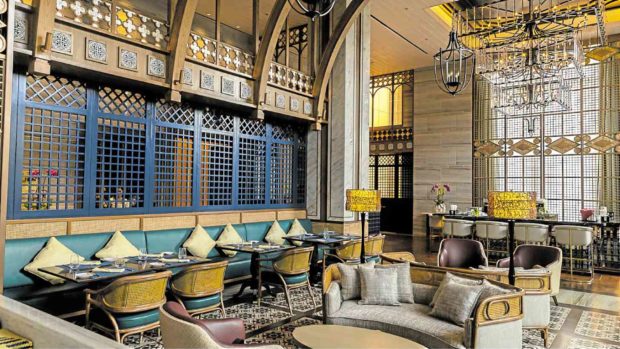
Nostalgia pretty much hits you hard as you step inside the bright and airy space of Casa Buenas. But as soon as you feel that nostalgia, you’d get excited, too, perhaps at the thought of trying the newest restaurant within Resorts World Manila, which boasts of stunning interiors that resonate with a classic Filipino ancestral home, and offers its own take on the Filipino-Spanish cuisine for the sophisticated palate of its diners.
This was how executive chef Godfrey Laforteza and Norman Agleron, principal designer at Hirsch Bedner Associates, would want the diners to experience Casa Buenas—a feast for all senses from the time you set foot inside the restaurant and be mesmerized by its interiors, until you sit down and finish the last morsel of your dish with great relish.
Laforteza carefully curated a menu that offers familiar Filipino homecooked dishes with a Spanish influence—one that “can bring you back to your childhood” but which also offers something fresh and new to the table.
For instance, Laforteza gives a twist to the traditional kilawin with Tuna Tartare Kilawin with coconut cream pinakurat. He showcased the “love dish” he called Kumot, a local spin on the fresh Vietnamese spring roll. Other Casa Buenas signature dishes include premium Grilled Kurobuta Pork Chop, Cebu lechon-inspired Sinulog Roasted Lechon Manok, Grilled US Angus Rib Eye Steak, and brandy-infused Emperador Strudel.
Similar to what the menu evokes, the interiors of Casa Buenas were meant to exude that nostalgic ambience such that it then becomes a “new place for the guest, but when they come here, there’s always something familiar in that nice detail in one corner that makes them smile,” shared Agleron.
Agleron said the design for this 135-seating restaurant boasts of the traditional Bahay na Bato-inspired interiors that exude a warm, relaxing vibe. It was likewise a “convergence” of the different influences in the Philippines, from the details of the patterns, the intricate wood marquetry adorning the bar and lounge areas, capiz accents on the wooden screens, Machuca tiles, hand-crafted lattice work, hand-carved hardwood floors, along with other influences from Vigan, Cebu, Bacolod, and Mindanao.
“But what we wanted is an interpretation of these influences. A good example is the capiz shell window that you find in a traditional home. We deconstructed it and put it together in such a way that it’s more functional and creates a nice envelope to the space. It’s not just a window, it becomes a screen, a partition. In this case, we did not apply all capiz shells to the windows… we used it as an accent on the fixed screens,” Agleron explained.
And it goes without saying that guests are treated to the famed Filipino hospitality and service sought globally.
“This is what Casa Buenas aims to achieve. We’d like it to be a showcase of the best that Filipinos can offer from food, service to architecture,” said Joee Guilas, director for CorpComm at RWM. “It’s our mission to create a world-class experience with the Filipino touch.”